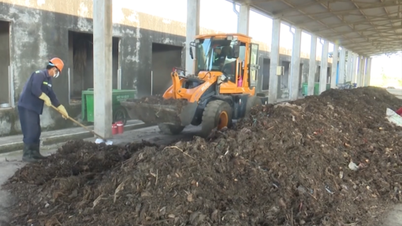Farmers need to soon give up the habit of burning straw right in the fields.
Previously, straw was often collected by farmers and used as fuel and animal feed. However, in recent years, most farmers often burn straw right in the fields after harvesting. According to records, in the fields in Thu Thua, Tan Tru districts, etc., after harvesting the 2023 Autumn-Winter rice crop, farmers burned straw right in the fields.
The cause of the above situation is partly due to the customs and habits of farmers. They believe that burning straw will create ash, help increase organic matter in the soil, and can kill pests and diseases that remain in the fields, etc. However, this is an act of environmental destruction; the structure of the cultivated soil is destroyed, degraded, making farming less productive.
Mr. Nguyen Van Cam (Binh Lang commune, Tan Tru district) said: After harvesting the 2023 Autumn-Winter rice crop, he burned straw to plow the land, preparing for the 2023-2024 Winter-Spring crop. Up to now, he has always done this to save time and labor.
According to scientific research, when burned, straw will produce many toxic gases such as CO2, CH4, SO2, ... When people inhale these toxic gases, it will adversely affect their health, making them susceptible to respiratory diseases. In addition, smoke from straw also obstructs visibility, leading to potential traffic safety risks. Not only that, burning straw also kills beneficial insects, unbalances the ecological balance of the fields, and causes many types of pests and diseases.
According to the report of the Department of Agriculture and Rural Development, the average annual rice output of the province reaches over 2.8 million tons, equivalent to about 3.1-3.4 million tons of post-harvest straw/year (1 ton of rice will produce 1.1-1.2 tons of straw). To minimize the burning of straw, the provincial Department of Agriculture recommends that farmers should utilize straw as a covering material for crops, as direct feed for livestock, and for growing straw mushrooms, etc. In addition, farmers can bury straw in the soil to help maintain nitrogen and organic matter in the soil.
It can be seen that burning straw not only harms the environment but also seriously affects agricultural land. Therefore, to help farmers limit burning straw after harvest, the provincial Department of Agriculture recommends that localities pay attention to promoting propaganda work so that farmers soon give up this harmful habit./.
Wisdom
Source





































































































Comment (0)